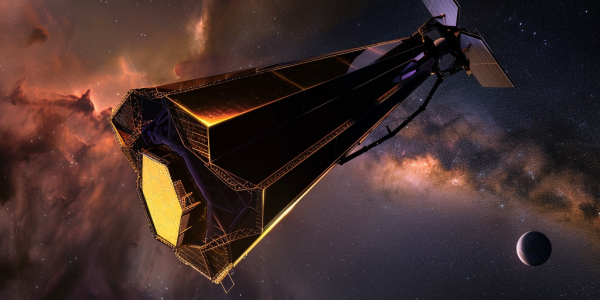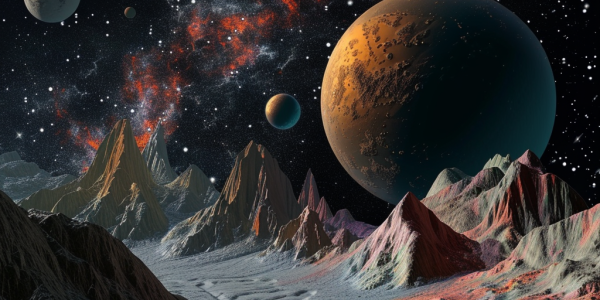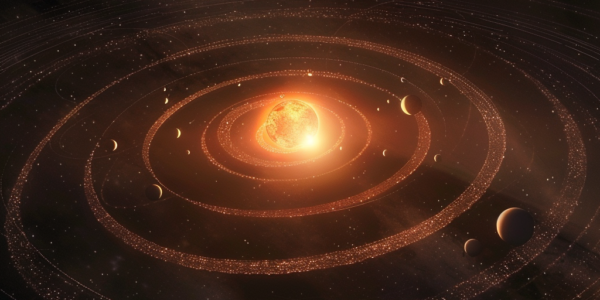New Research Suggests Rocky Exoplanets More Likely to Host Large Moons
Recent simulations suggest that smaller rocky exoplanets are more likely to host large moons, shedding light on the formation of Earth’s moon and potential exomoons around other planets in the universe. Scientists explore the concept of ‘streaming instability’ in moon formation, revealing challenges for moon survival and implications for the search for exomoons beyond our solar system.
Atmosphere Discovered on Rocky Exoplanet 55 Cancri e
Recent breakthroughs in astronomy have unveiled a fascinating discovery – an atmosphere surrounding a rocky exoplanet, 55 Cancri e, shedding light on the intricate interplay between its molten surface and evolving atmosphere. Utilizing the James Webb Space Telescope, scientists identified a thick atmosphere possibly containing carbon monoxide and carbon dioxide, offering valuable insights into the planet’s composition and behavior. This groundbreaking research expands our understanding of exoplanets and planetary atmospheres, paving the way for further exploration of the vast universe beyond our solar system.
JWST Unveils Tumultuous Weather Patterns on Exoplanet WASP-43b
The James Webb Space Telescope (JWST) unveils the tumultuous weather patterns of the distant exoplanet WASP-43b, a sizzling hot Jupiter located 261 light-years away. With relentless supersonic winds and a scorching inferno, WASP-43b’s unique attributes make it an ideal candidate for JWST’s keen observations. Leveraging its potent infrared capabilities, the telescope maps the planet’s atmospheric composition and structure with unprecedented clarity, shedding light on nightside clouds and chemical imbalances on this fiery exoplanet.
Unraveling the Mystery of Hot Jupiter Orbital Decay
Discover the fascinating world of hot Jupiters and their orbital decay in this groundbreaking study by researchers at Durham University. Uncover the critical role of gravitational tides and magnetic fields in driving the shrinking orbits of these massive exoplanets, shedding light on the intricate interplay between planets and their parent stars. Learn how hot Jupiters like WASP-12b are on collision courses with their stars, torn apart by gravitational forces and magnetic interactions, offering insights into the fate of these celestial bodies beyond our solar system.
Scientists on the Brink of Discovering Signs of Life on Another Planet
Exciting news in space exploration as scientists may be on the brink of discovering signs of life on another planet. The James Webb Space Telescope is gearing up to investigate a distant solar system after potential indicators were detected on a planet. Researchers have identified a gas in the atmosphere that could only be generated by living organisms, sparking excitement among scientists. Stay tuned for updates as the exploration of the cosmos continues.
Advancing Exoplanet Geology Through Observations
Explore the evolving field of exoplanet geology and the exciting possibilities that lie ahead in exoplanetary research. Learn how advancements in observational technologies are reshaping our understanding of planetary systems and opening up the potential to investigate the geology of rocky exoplanets. Discover the implications of studying atmospheric conditions on rocky exoplanets and the challenges researchers face in understanding their geological processes. Find out how next-generation telescopes like the James Webb Space Telescope (JWST) are providing valuable data for researchers to refine our comprehension of rocky exoplanet geology and evolution.
Rainbow-like ‘glory effect’ detected on planet outside our Solar System
Potential signs of the rainbow-like ‘glory effect’ have been detected on a planet outside our Solar System for the first time. Data from ESA’s sensitive Characterising ExOplanet Satellite, Cheops, along with other missions, suggest this phenomenon is beaming from ultra-hot gas giant WASP-76b, 637 light-years away. If confirmed, this first extrasolar glory will reveal more about the nature of this puzzling exoplanet, with exciting lessons for how to better understand strange, distant worlds.
Scientists Discover Remarkable Planetary System 100 Light-Years Away
Scientists have discovered a remarkable planetary system around 100 light-years from our Solar System, hailed as the most mathematically perfect system of exoplanets ever observed. The star at the center, an orange dwarf named HD 110067, is orbited by six exoplanets that move in perfect harmony, intriguing scientists with the potential for life and the search for alien technology.
Physical Limitations May Prevent Alien Civilizations from Space Exploration, New Study Suggests
Alien civilizations may be facing a significant barrier to space exploration, according to a new article published in the Journal of the British Interplanetary Society. The article suggests that physical limitations may be preventing extraterrestrial beings from leaving their home planets, adding a fascinating twist to the ongoing search for intelligent alien life. The implications of these proposed limitations are thought-provoking, raising questions about the possibility of unaware aliens residing within massive oceans or civilizations struggling to break free from the immense gravitational forces of their planets.
LIFE Space Mission Study Shows Potential to Detect Traces of Life on Exoplanets
Physicists at ETH Zurich and the University of Zurich have conducted a study to determine whether the planned LIFE space mission could detect traces of life on other planets. The study, published in The Astrophysical Journal, utilized our own planet as a test object to demonstrate the mission’s potential success. The LIFE (Large Interferometer for Exoplanets) initiative, led by ETH Zurich, aims to use a network of five satellites to detect traces of life on exoplanets. These satellites will form a large telescope close to the James Webb Space Telescope, allowing for the observation of Earth-like exoplanets and the deduction of their composition and atmospheres based on infrared thermal radiation.










